Some key elements of the model
FLUMY is a stochastic process-based model that allows us simulating the geometry of heterogeneous reservoirs in meandering channelized systems (alluvial and turbiditic). By combining first-order hydrologic equations describing the channel evolution and stochastic algorithms simulating chute cutoff, levee breaching, avulsions and associated deposits, FLUMY provides realistic realization of both the planform evolution of the river and the resulting 3D geometry of sediment accumulation at the scale of the genetic units (Lopez, 2008).
FLUMY includes all features classically found in a meandering system.
Fluvial Systems
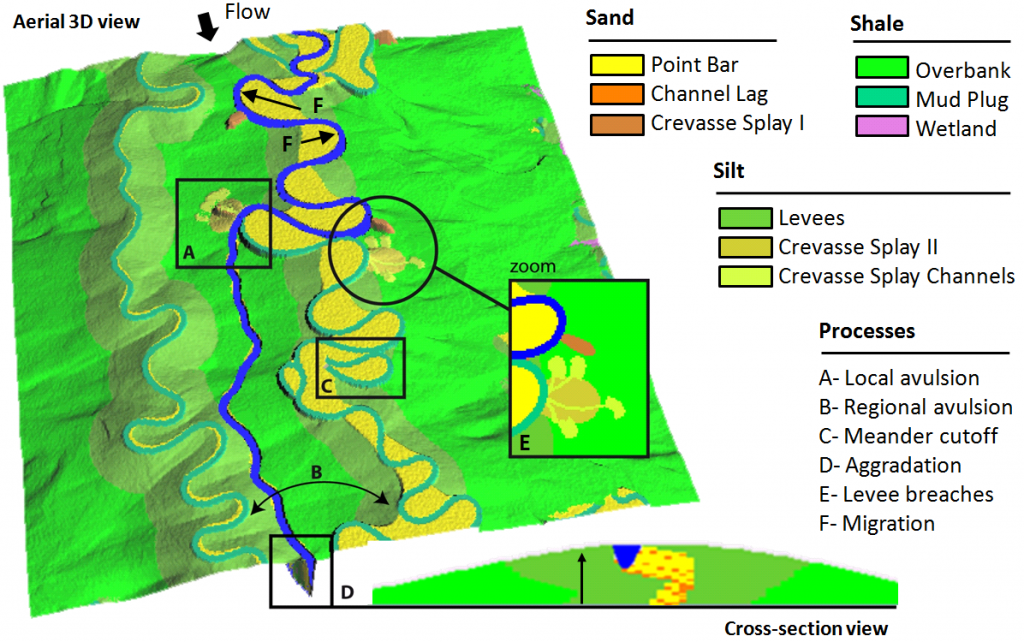
Turbidites Systems
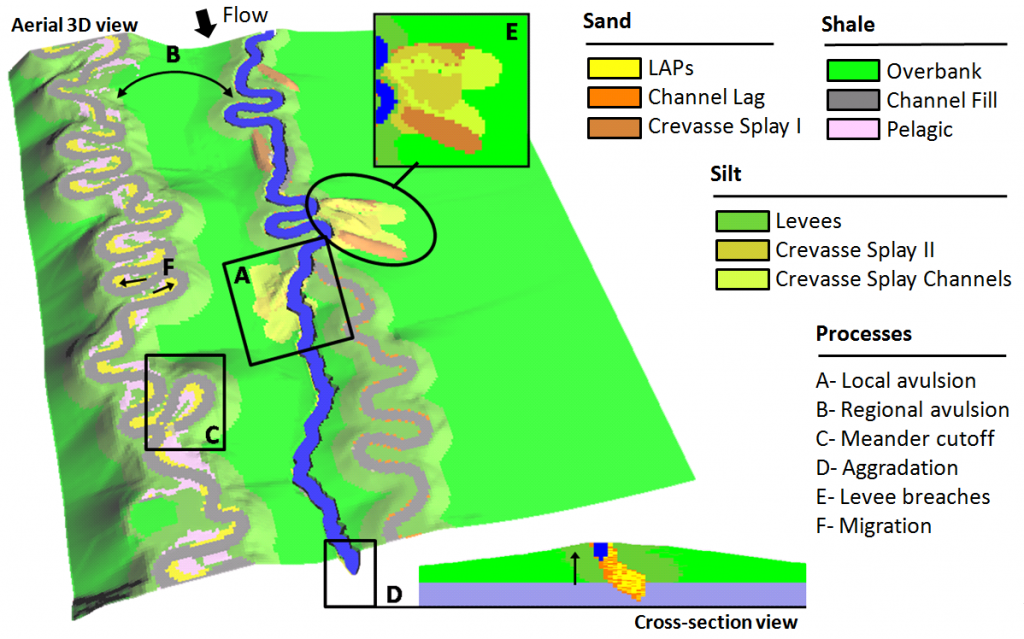
Simulated processes
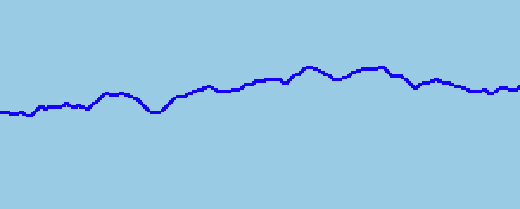
The channel migration stems from equations developed in hydraulic studies and proved to generate realistic 2D shapes. A stochastic algorithm allows us simulating chute cutoff, levee breaching, avulsions and associated deposits.
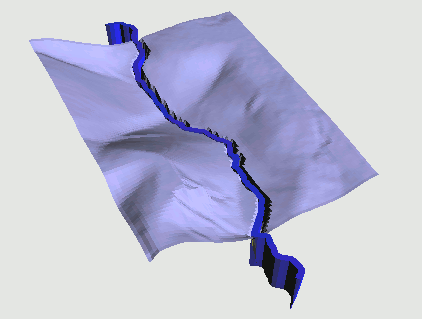
The aggradation is made possible during overbank floods, by deposition of fine grained alluvium over the floodplain, generating realistic topographies. Lacustrine or peat deposits may occupy lowland areas.
Results
3D blocks that materialize sediment accumulations can be informed with lithofacies, grainsize or age. These 3D blocks can be used to test hypotheses on architecture, to extract training images or virtual wells or to perform fluid simulations. The user can also generate simple data on the evolution of the experiment (number of cutoffs, sand-clay proportion, sandbody extension, aggradation rate as well as geometric and hydraulic parameters).
Parameters can be changed during simulation to reproduce the stratigraphic units given by a Vertical Proportion Curve of facies.

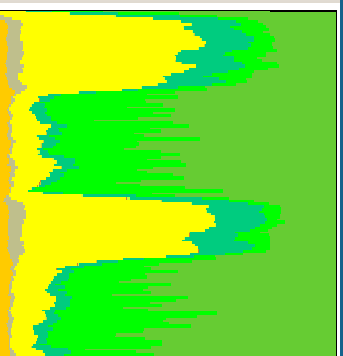
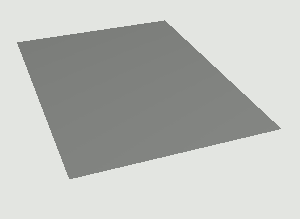
Incision and filling by confined systems can also be performed by the software, as illustrated here for turbiditic flows.
>> More details here
